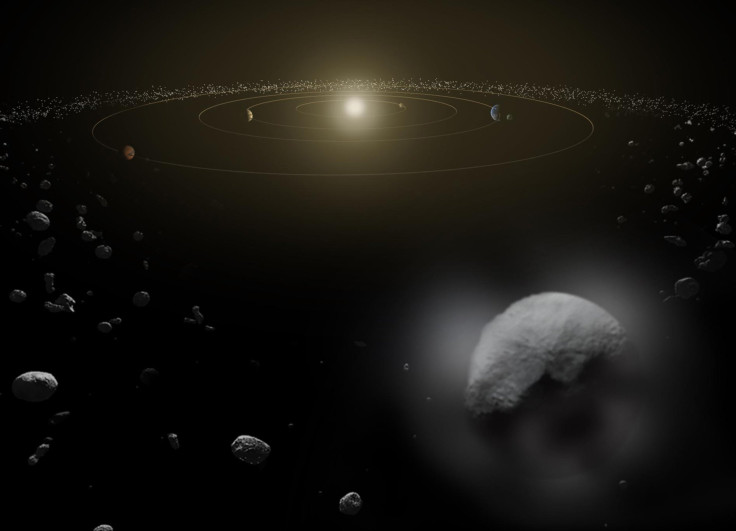Primitive Meteorite's Magnetic Fields Hold Clues To Solar System’s Formation

Magnetic fields trapped inside a primitive meteorite could help scientists better understand how the early solar system evolved, according to a study, which also said that shock waves traveling through the cloud of dusty gas around the early sun was a major factor in solar system’s formation.
Although the solar system is believed to be formed about 4.5 billion years ago, the formation process left a lot of construction debris behind. Among the most useful pieces of debris are the oldest types of meteorites, called the chondrites, which have remained relatively unmodified since they formed at the birth of the solar system. Chondrites are built mostly of small stony grains, called chondrules that are barely a millimeter in diameter.
“Chondrules themselves formed through quick melting events in the dusty gas cloud -- the solar nebula -- that surrounded the young sun,” researchers said in an Arizona State University statement. “As chondrules cooled, iron-bearing minerals within them became magnetized like bits on a hard drive by the local magnetic field in the gas. These magnetic fields are preserved in the chondrules even down to the present day.”
According to researchers, the study mapped the magnetic fields of the chondrule grains that came from a meteorite named Semarkona, a space rock weighing about a pound and a half that fell in a place in India in 1940. Scientists found that the meteorite had a magnetic field, which was similar to that at Earth’s surface.
"The new experiments probe magnetic minerals in chondrules never measured before. They also show that each chondrule is magnetized like a little bar magnet, but with 'north' pointing in random directions,” Steve Desch of Arizona State University's School of Earth and Space Exploration, and the study’s co-author, said in the statement.
According to Desch, the study’s findings suggest that chondrules became magnetized before they were built into the meteorite, and not while resting on Earth’s surface.
© Copyright IBTimes 2024. All rights reserved.






















